The best varieties and types of gooseberries
Gooseberries are considered universal, as they grow in regions with different climates. The fruits are good both fresh and processed, as part of jam, jelly or compote.
If you decide to grow this crop in the garden, decide which berries you like best. Let's consider different varieties of gooseberries depending on the timing of ripening, color and taste of the fruit, and climate resistance.
The most delicious and sweet gooseberry varieties
The most productive and delicious gooseberry varieties:
- Cooperator;
- Sirius;
- Eaglet;
- Change;
- Grossular;
- Pushkinsky;
- Leningradets;
- Invicta;
- Anniversary;
- Mashenka;
- Snezhana.
Like all garden crops, gooseberries require close care. It is important to know what is suitable for the culture and what will be unfavorable. So, gooseberries do not like excessive shading and stagnation of water. It is better to plant it in a sunny place and moisten it if necessary.
Classification by color
In different types of gooseberries, the color of the berries varies from violet-blue to yellow and pink-red. By the shade of the fruit, you can to some extent learn about their taste and navigate the methods of use.
Blue
Berries that are dark purple or blue in color are considered the most delicious. They are smooth, often covered with a waxy coating. Because of the spicy sweet taste, children really like them. The bushes are usually tall.

The dark-colored fruits are suitable for making jams, pies, smoothies, and confiture.
Popular varieties:
Blue gooseberries produce a bountiful harvest if grown in nutritious soils.
Green
Green gooseberries have a sour taste, with more sourness in the skin. Plants are usually large-fruited. Among the green fruits there are also sweet ones, but the berries themselves are medium in size and suitable for making jam.
Attention! Birds love gooseberries. To save the harvest, cover the bushes with netting.
Green varieties:
- Invicta;
- English green;
- Malachite;
- Ural emerald.
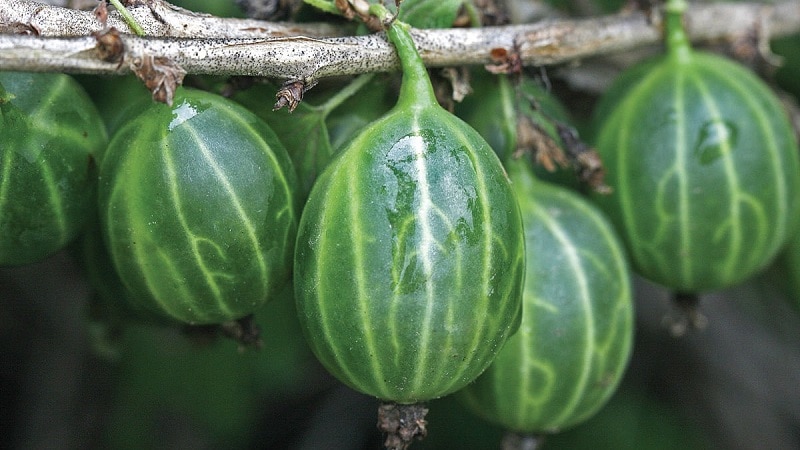
Green-fruited plants can be thornless or thorny, while bushes can be short or tall.
Yellow
Yellow berries are usually sweet, and there is sweetness in both the pulp and the skin. They are considered dessert and are suitable for fresh consumption.
Varieties:
- Golden;
- Russian yellow;
- Honey;
- Pushkinsky.
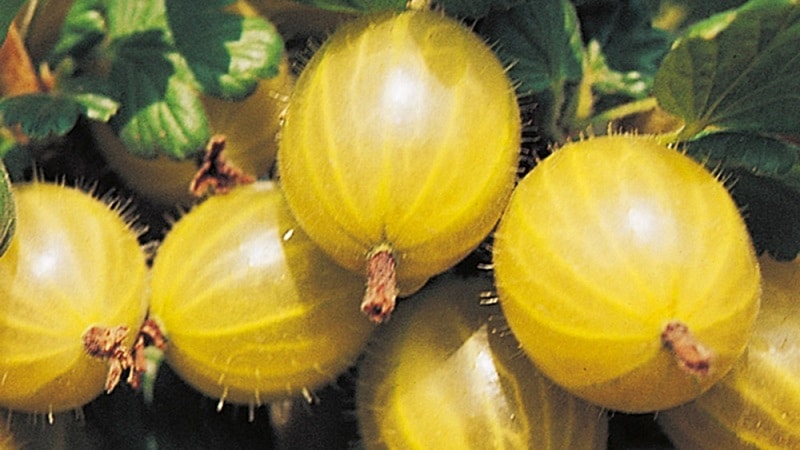
Yellow gooseberries usually have prickly thorns. The bushes are stunted and the yield is average.
Red
Red-fruited varieties are resistant to diseases and insect pests. They practically do not require chemical protection.
The bushes are tall and spreading. The berries are of medium taste; they are most often used for making compotes, preserves and jams.
Common red-fruited gooseberry varieties:
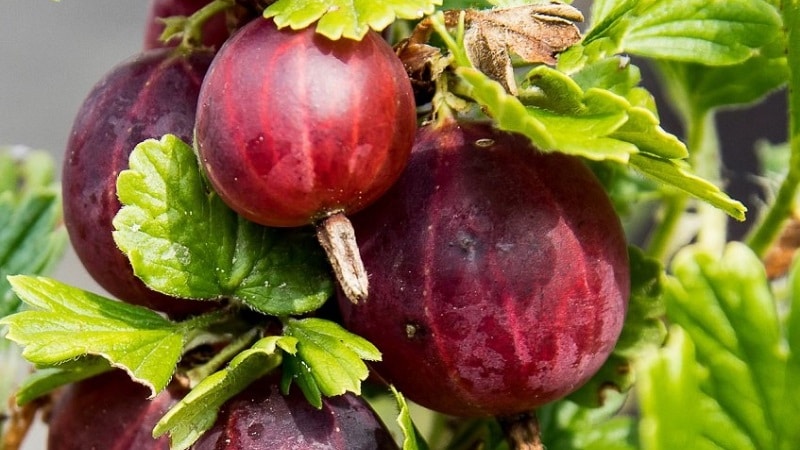
Most often, gardeners prefer red-fruited varieties. According to reviews, they are suitable for all types of processing.
According to ripening period
Gooseberries have early, mid-ripening and late-ripening varieties. Their characteristics and care requirements can vary greatly.
Early
There are a lot of early varieties. Let's look at the most delicious and fruitful ones.
Chelyabinsk
Refers to green-fruited and weak-thorned. The bushes are medium-sized, the thorns are located mainly at the bottom.Greenish flowers begin to bloom in the second decade of May, fruits ripen from mid-July. The taste is sweet and sour, the berries weigh 2-3 g.
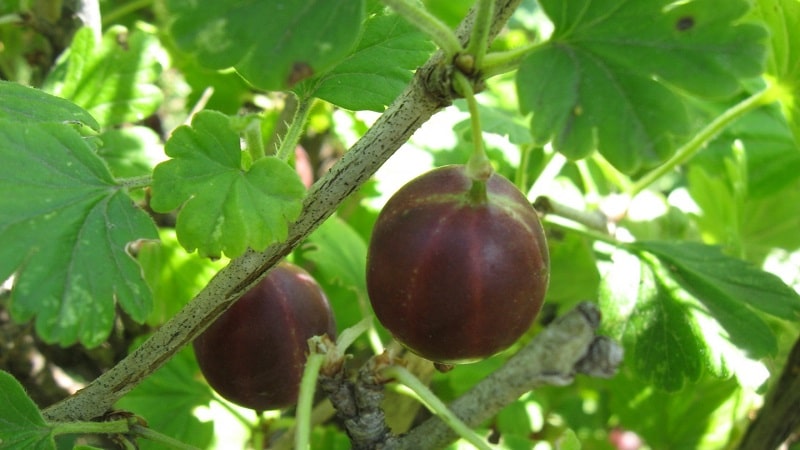
Chelyabinsk gooseberry is high-yielding, heat- and winter-hardy. Not resistant to septoria, has average immunity to powdery mildew. Up to 3.5 kg of berries are harvested from each bush. The variety is not suitable for acidic and waterlogged soils.
Ksenia
This variety has a minimum of thorns and a pronounced sweet taste of berries. The fruits are deep pink in color and large. The maximum weight of one is 14 g.

The bush is tall and spreading. Gooseberry Ksenia gives a good harvest: with proper care, up to 10 kg of berries are harvested from one plant per season. The harvest is harvested in the first half of June. In temperate climates, the plant overwinters well and is disease resistant. The berries keep well.
Affectionate
The Affectionate gooseberry is a red-fruited one: the oval berries have a bright scarlet color, the average weight is up to 7 g. The fruits are aromatic and sweet, suitable for fresh consumption. They ripen in late June – early July.

Tender is resistant to powdery mildew and severe frosts. Productivity - up to 7 kg per bush.
Reference. Other early varieties: gooseberry Orlets, Pax, Pushkinsky and Leningradsky giant.
Mid-season
Medium-ripening bushes are not very productive, but are resistant to the cool climate of various regions of the Russian Federation.
Mashenka
This thornless variety is loved for its unpretentiousness and frost resistance. During the ripening period the bushes are dense, tall and spreading. Golden-brown fruits are covered with small thorns, medium size, weight up to 4 g, sweet and sour taste.
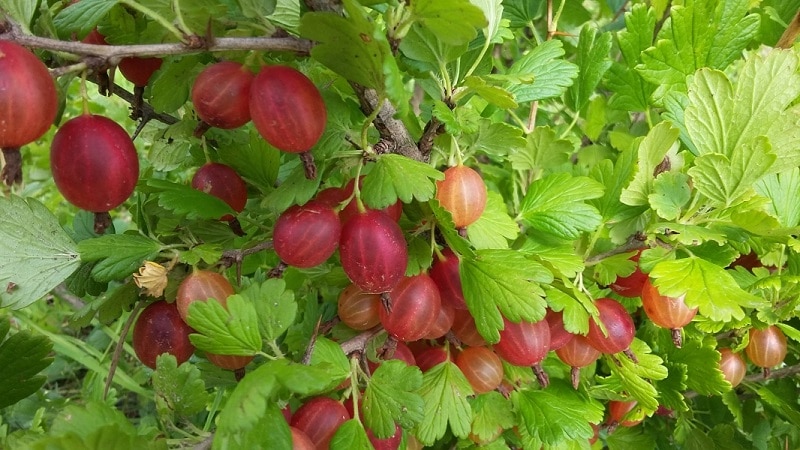
Gooseberry Mashenka is self-pollinating, is not afraid of insect pests, and can withstand long-distance transportation. Up to 5-6 kg of berries are collected from each bush.They do not like shade and excess moisture, so it is better to plant them in sunny and elevated places.
Change
This is an old-timer. It is loved for its productivity and ease of care. Gooseberry Smena tolerates both winter and summer drought. The bush is highly branched, with abundant shoots and thin small thorns. The fruits are round, not very large (up to 3 g), burgundy-violet in color, ripen in mid-July. Productivity - up to 6 kg per bush.
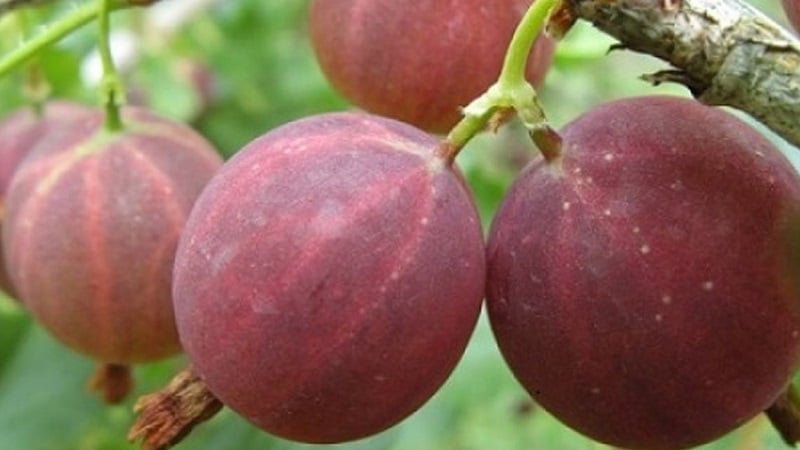
Based on Smena, breeders created the Seedling Smena variety. It retained all the properties of its predecessor, but received large fruits. Oval-round berries can reach a weight of 10 g.
Reference. Other mid-season varieties: bright yellow gooseberry Yubileiny and red-fruited Kooperator.
Late
Late-ripening varieties are grown in almost all regions of Russia.
Captivator
The high-yielding variety ripens in the second decade of summer. The berries are oval, dark red, weighing up to 6 g, with a rich sweet and sour taste. The bushes are tall, reaching a height of 1.6 m.
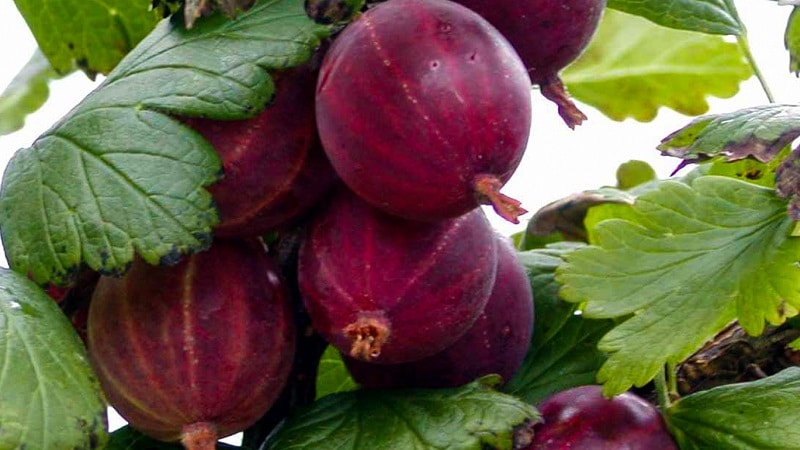
Gooseberry Captivator is good at every stage of ripeness. Berries are consumed fresh, canned and frozen. In any condition they retain their rich taste. Another advantage of the plant is its resistance to powdery mildew.
Sirius
This variety is suitable for any region of the country. The plant is tall, the branches are directed vertically, there are rare thorns in the lower part of the bush. Sirius gooseberry produces up to 3.8 kg of yield per bush. It has sweet dark red berries of medium size, weighing up to 4 g, and round in shape.
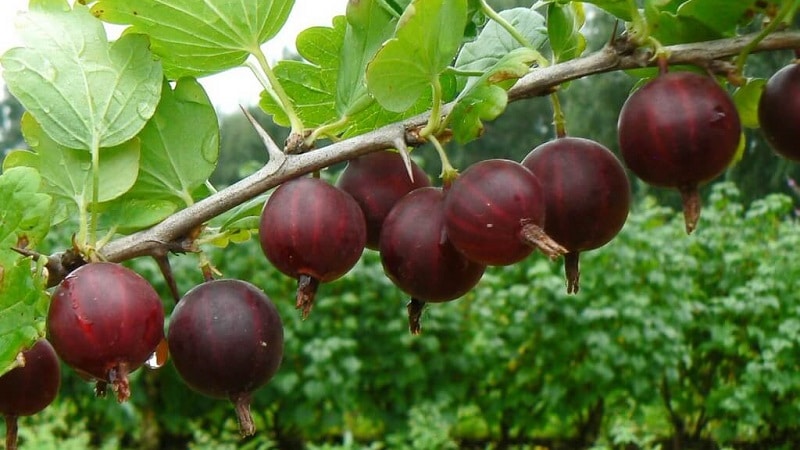
The variety is resistant to frost and has shelf life of fruits. The berries make delicious jam. Sirius does not tolerate diseases and direct sunlight very well in southern regions.
Snezhana
Belongs to the yellow-fruited variety.The berries are pear-shaped, weigh up to 6 g, and have a sour taste. The bushes are medium-sized, compact, about 1 m high. Snezhana tolerates frost and disease well and needs regular moistening so as not to dry out. The variety produces a bountiful harvest; the berries are suitable for jam, compotes and confitures.
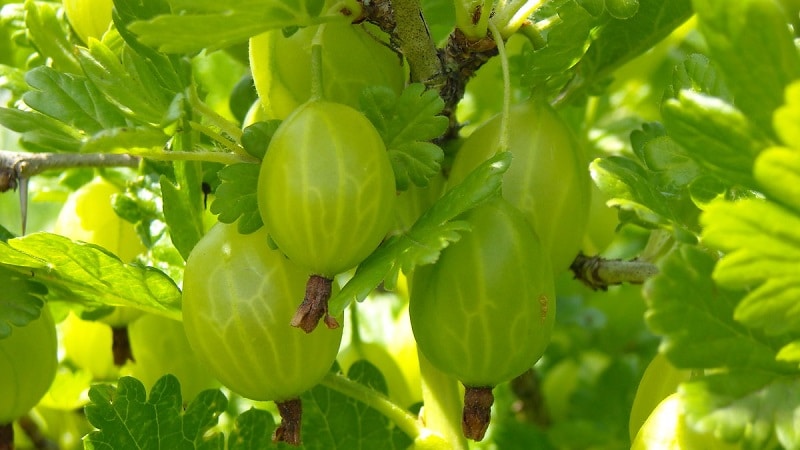
The best varieties for different regions
Although there are a lot of varieties, there are several that are most suitable for each region. It is always better to produce a crop with the least amount of labor required than to try to grow a variety that does not tolerate local conditions.
Middle zone and Moscow region
This region is characterized by periodic severe frosts and temperature changes. It often rains for a long time and there are few sunny days. Such conditions contribute to the spread of diseases and the proliferation of a large number of insect pests.
Universal plants for the middle zone:
- Eaglet;
- Pax;
- Anniversary;
- Golden;
- Sirius.
Leningrad region and North-West
In the North-West the climate is even cooler and damper than in the Moscow region. When choosing gooseberries, take into account its frost resistance, yield, quality of berries and resistance to diseases.
The hardiest varieties for the region:
- Lighthouse;
- Change;
- White Nights;
- Leningrader.
Siberia
In the harsh climate of Siberia, not every gooseberry ripens. The main conditions for plant survival are resistance to disease and severe frost.
According to reviews from experienced gardeners in Siberia, the following varieties give a good harvest:
- Cooperator;
- Leningradets;
- Commander;
- Eaglet.

Ural
The Ural climate does not spoil plants with warmth: there is a short summer and late spring. Therefore, plants must have a late growing season.
Optimal varieties for the Urals:
Shaggy gooseberry
The peculiarity of the shaggy gooseberry is its very sweet taste and delicate aroma of the berries. Despite this, such varieties are not very popular among gardeners due to their susceptibility to fungal diseases.
Reference. Shaggy varieties are distinguished by compact bushes. The berries have a thick skin, but this prevents cracking and helps with transportation.
The culture is frost-resistant, not demanding on the composition of the soil. The color and size of the berries depend on the selected variety.
Popular plants:
- English yellow;
- Early Gennings;
- Transparency.
Hairy gooseberry does not tolerate infections well. Proper watering and sanitary pruning of bushes help reduce the risk of diseases. Gooseberries should not be planted next to coniferous plants: this increases the likelihood of rust infection.
Conclusion
There are many varieties of gooseberries. For planting, it is important to choose a plant not only according to the taste of the berries, but also according to the qualities that will be optimal for a particular region. If you follow the rules of care for each variety, you will be able to get a bountiful harvest, which can be used in fresh or processed form.